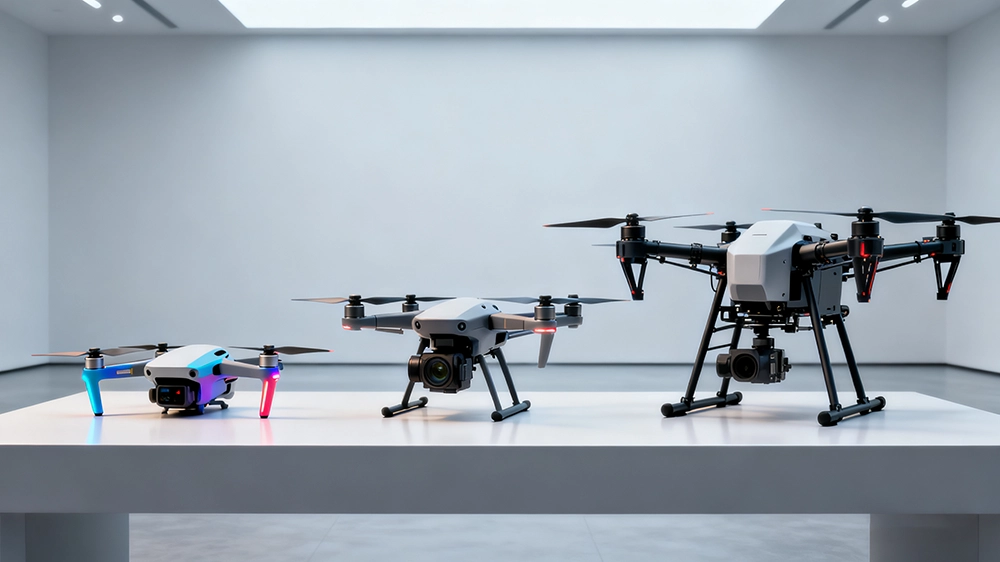Unmanned Aerial Vehicles, often called drones, are aircraft that operate without a human pilot on board. They rely on remote control or pre-programmed flight plans to move through the air. From hobby toys to industrial tools, Unmanned Aerial Vehicles have become part of daily life—but how do they work, and what do you need to know about them? Let’s break it down simply.
What Exactly Are Unmanned Aerial Vehicles?
At their core, Unmanned Aerial Vehicles are machines designed to fly without a crew. They range in size from tiny models (smaller than a palm) to large industrial ones (bigger than a car). All UAVs share key parts: a frame, motors, propellers, a power source (usually a battery), and a control system.
The control system connects to a remote (for hobby drones) or a ground station (for commercial ones). Some advanced Unmanned Aerial Vehicles use GPS to follow set routes, while others have cameras or sensors to collect data mid-flight. Unlike manned planes, they don’t need runways—many can take off and land vertically (called VTOL UAVs).
Common Types of Unmanned Aerial Vehicles
Unmanned Aerial Vehicles aren’t one-size-fits-all. They’re grouped by size, use, and flight style. Here are the most common types:
- Consumer Drones: Small, lightweight, and affordable. They’re used for hobby flying, taking photos, or recording videos. Most weigh less than 2kg and have built-in cameras.
- Commercial Drones: Larger and more powerful. They serve industries like agriculture (for crop monitoring), construction (for site surveys), and delivery (for small packages).
- Industrial Drones: Heavy-duty models for tough tasks. They inspect power lines, oil rigs, or bridges—some can carry tools or sensors to detect damage.
- Military Drones: Used for surveillance or training (non-combat models). They’re built for long flights and harsh environments.
How Do Unmanned Aerial Vehicles Stay in the Air?
The basic flight principle of Unmanned Aerial Vehicles is simple: propellers create lift. Most consumer drones have 4 propellers (called quadcopters), which spin in opposite directions. When the motors speed up, the propellers push air down, lifting the drone up.
To move forward, backward, or side to side, the drone adjusts the speed of individual propellers. For example, speeding up the back propellers and slowing the front ones makes the drone move forward. A built-in gyroscope keeps it stable—preventing it from tilting or crashing in windy conditions.

Key Uses of Unmanned Aerial Vehicles Today
Unmanned Aerial Vehicles have gone far beyond hobby use. They solve real problems across industries:
- Agriculture: Farmers use UAVs to spray crops with fertilizer or pesticides. Drones with thermal cameras can spot dry areas or diseased plants early.
- Search and Rescue: Emergency teams use UAVs to find missing people in forests or disaster zones. They cover large areas faster than ground teams.
- Media and Events: Filmmakers use drones to capture aerial shots for movies or TV. At concerts or sports games, UAVs take wide-angle photos of crowds.
- Infrastructure Inspection: Engineers use UAVs to check tall structures like wind turbines or skyscrapers. This avoids the need for workers to climb risky heights.
Rules for Flying Unmanned Aerial Vehicles
Flying Unmanned Aerial Vehicles isn’t unregulated—governments have rules to keep people and property safe. Here are common guidelines (varies by country):
- Register Your Drone: Most countries require registering drones over a certain weight (e.g., 250g in the US).
- Fly in Safe Areas: Don’t fly near airports, crowds, or government buildings. Keep a safe distance from people and animals.
- Follow Height Limits: Usually, you can’t fly UAVs higher than 120 meters (400 feet) to avoid conflicting with manned planes.
- Avoid Night Flights: Unless your drone has special lights, night flying is often banned for beginners.
The Future of Unmanned Aerial Vehicles
As technology improves, Unmanned Aerial Vehicles will become even more useful. Future trends include:
- Longer Flights: Better batteries (like Bettewill’s high-capacity UAV batteries) will let drones fly for hours instead of minutes.
- Autonomous Flights: UAVs will use AI to navigate without human control, making tasks like delivery faster.
- Bigger Loads: Industrial drones will carry heavier tools or packages, expanding their use in construction or logistics.
Whether you’re curious about flying a hobby drone or want to learn how UAVs help industries, understanding Unmanned Aerial Vehicles starts with the basics—and this guide is your first step.

